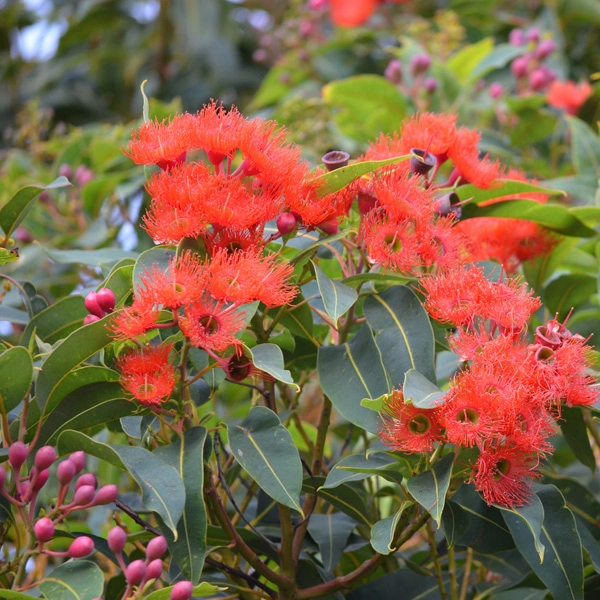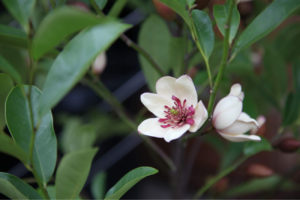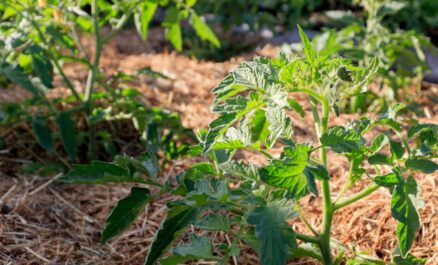The 18 Best Trees For Pots In Australia [+Images]
There’s no doubt about it—plants are good for you. They reduce your stress levels, your chances of depression, and can even improve your memory! Their mental and emotional health benefits have been well documented, so we’ve created this comprehensive list of the best trees for pots in Australia.
Citrus (Rutaceae)
Image from Better Homes and Gardens
These lush Australian evergreens have sweetly scented flowers, offer year-round colour, and best of all, delicious fruit! Plants in the genus Rutaceae produce fruits including limes, lemons, oranges, grapefruits, mandarins, and kumquats. Depending on the type of citrus their height can vary, but they can grow to eight metres. They prefer free-draining soils, regular watering and lots of fertilizer. These are one of the best trees for pots in full sun in Australia, and doing so will ensure lush foliage and bumper fruit production.
Japanese maples (Acer palmatum)
Image from Hortmag
The slower growth rate and smaller size of Japanese Maples make them one of the most popular trees for pots. Their compact root system also means the roots won’t interfere with your home’s foundations — so they are ideal for a courtyard location. Upright forms suit almost any pot shape or finish, so they are easy to style. However, a wider pot will balance out the spreading form of weeping maples. For best results, protect them from drying winds and harsh sunlight.
Camellias (Theaceae)
Image from Genes Nursery
Known as the Queens of the winter flowers, these beautiful small trees will certainly pack a colourful punch in your garden. They are highly prized for their evergreen foliage, shapely habit and exquisite blooms that appear from autumn through to spring. They grow best with protection from harsh sun and regular watering. But regardless of whether you’re growing them in shade or part-sun, make sure their root system is covered with a generous layer of organic matter, and that they are fertilised regularly.
Baby Orange (Corymbia ficifoliad)
Image from Garden Express
This dwarf-growing version of the iconic Australian Gum makes a beautiful specimen in a large pot. A hardy plant, it produces numerous branches that form a dense canopy and bronze-red new growth that eventually turns mid-green. In summer, striking orange flowers appear that provide a feast for nectar-loving birds. It prefers a sunny, well-drained position and is ideal for a range of locations from coastal gardens to streetscapes.
White Caviar (Michelia)
Image from The Tree Shop
White Caviar is a cross between two of the most attractive, popular and hardy Michelia varieties — yunnansensis and figo. It is a medium-sized, highly ornamental evergreen with a dense habit and a unique upright habit, which makes it ideal for narrow spaces. In late spring/early summer, it produces fragrant, cream, and pink flowers. It prefers well-drained, moist and humus-rich soil in a sunny garden position.
Nepalese Blue Bamboo (Himalayacalamus porcatus)
Image from Bamboo South Coast
Nepalese Blue is a weeping, ornamental bamboo that features white/soft blue, grey coloured culms and delicate green foliage. It will naturally grow up to three metres in height but can easily be trimmed down if need be. Although low maintenance and drought-tolerant once established, Nepalese Blues need filtered light or a shady area to thrive. Regular watering will also help maintain its lush appearance.
Crepe Myrtles (Lagerstroemia indica)
Image from Blerick Tree Farm
This is a deciduous, vase-shaped tree with pink, white, purple or mauve crepe-like flowers that bloom in late summer.
In autumn, the leaves turn orange, yellow or red depending on the variety before falling. Smaller varieties like “Tonto” (which has rich pink flowers) and “Zuni” (which has mauve flowers) are ideal for growing in pots. Keep well-watered throughout summer, and to reduce the risk of mildew, keep the pot in an open, sunny garden spot with good air circulation.
Olives (Olea europaea)
Image from Green Prophet
These elegant trees thrive with the added drainage of a pot, respond well to pruning, and are suited to virtually any sized space. They also look just as beautiful in a sleek modern pot as in a traditional terracotta pot. Popular varieties include “Mazanillo”, “Kalamata”, “Arbequina” and “Picual”. In terms of care, cool winters are needed for the buds to flower. “Perfect” flowers need to form with both male and female parts to produce fruit, but you can improve pollination by planting other olive trees nearby.
Forest Pansy (Cercis canadensis)
Image from Hello Hello Plants
Forest Pansy is an Eastern Redbud cultivar and a small, stunning ornamental tree that grows to a height of five metres. It is a deciduous, slow-growing tree with pink pea-like flowers and heart-shaped, purple-red leaves that mature to orange and red in autumn. Set off its bold foliage and flowers against a monochrome pot for a contemporary look. It grows best in well-drained, fertile soil and full sun or part shade, and should be watered well and mulched over summer to avoid scorch.
Wollemi Pine (Araucariaceae)
Image from Imgur
This prehistoric giant might seem like an odd choice for a pot, but its slow growth rate will allow you to appreciate its beauty for years. Appropriate watering is essential for survival, although it shouldn’t be watered daily, even in hot, dry conditions. Check the moisture content of the potting mix regularly, and when dry, thoroughly saturate the plant. Wollemi Pines prefer a sheltered location out of full sun otherwise their foliage may start to yellow. Native tree fertilizer will slow its growth rate, and it can be pruned on its upright branches and stems to maintain its compact form.
Peace Lily (Spathiphyllum)
Image from HGTV
A popular plant for a pot, the evergreen Peace Lily has glossy, deep-green leaves and produces long-lasting white flowers on long stems, mainly in the warmer seasons. It will thrive in bright, filtered light to full-shade conditions but keep out of direct sunlight, as this will scorch the leaves. The plant prefers rich, moist (but not wet), free-draining soil and annual fertilising with a controlled-release product.
Fuchsia (Fuchsia)
Image from The Spruce
A much loved perennial garden favourite, there are more than 100 species of fuchsias in nature, and many are bred for their showy flowers. Flowers are large and pendulous but prone to damage, so the plant should be kept in a sheltered position so it’s not exposed to strong winds. Fuchsias burst into flower from late spring to early winter and prefer protection from the sun, regular watering, and well-drained soil.
Port Wine Magnolia (Michelia figo)
This evergreen, slow-growing shrub has compact foliage, small, dense leaves and grows to around three metres tall. Small, purple-brown flowers appear from early September to late November. The flowers are somewhat insignificant to look at but they have a beautifully sweet, heavy scent that smells a bit like chewing gum! These plants prefer well-drained soil enriched with compost and a full sun or part shade position. Prune after they flower to encourage new growth.
Flamingo Flower (Anthurium andreanum)
The Flamingo Flower plant grows to a height of around a metre and has large, glossy, deep-green leaves that are often heart-shaped. Flowers are striking, last for months, and range in colour from scarlet, pink and orange to creamy white and deep purple, almost black. It prefers well-drained soil and the addition of some controlled-release fertiliser every six months. It is also frost-intolerant and prefers bright light without direct sun in a warmer climate.
Golden Cane Palm (Dypsis lutescens)
If you’re after a taller pot plant, the Golden Cane Palm is your go-to as it grows to a height of up to eight metres. It is a dense, lush, clumping palm that’s ideal pool-side or in a tropical garden setting as a screening or feature plant. It has golden stems and light green fronds that take on shades of gold. Plant in well-drained soil in a shaded or full sun position and water and mulch regularly until it’s established. Although relatively undemanding, it should be kept moist during dry periods as hot sun can burn its leaf tips.
Chilean Jasmine (Mandevilla iaxa)
Image from Dave’s Garden
This is a vigorous climbing plant with broad, dark green leaves and it is evergreen to deciduous, depending on the climate in which it’s grown. Large, fragrant flowers bloom throughout summer and autumn that are large, strongly scented and white, pink or crimson. Ideal as a climber, you can also prune its tendrils for a soft, bushy effect. It prefers moist, well-drained soil, and tolerates a wide range of conditions, however it grows best in a sunny spot.
Geranium Big Red (Pelargonium x hortorum)
This is a star performer among geraniums, with its large, round abundant clusters of fragrant, bright red flowers that appear in spring and last until autumn. It is a compact, evergreen, perennial shrub that has round, crinkled-edged green leaves. It’s also extremely hardy, including being drought-tolerant and disease-resistant. Geranium Big Red prefers full sun or part-shade and well-drained soil.
Imperial Bromeliad (Alcantarea imperialis)
Image from Pinterest
For a potted plant with wow factor the Bromeliad is unequalled, with its green, architectural foliage that has beautiful bright red undersides. Hardy and evergreen, it is easy to grow and thrives in well-drained soil and sunny to partly shaded garden positions. Water this plant in its centre when the water is low. It’s worth noting that the flowering process of the Imperial Bromeliad can take up to a year. Once this has occurred, the plant will die but be replaced by offshoots (known as “pups”) that shoot up from the original base. These can be easily removed and re-potted.
References
- Kaja Perina, 2019, 11 Ways Plants Enhance Your Mental and Emotional Health, Psychology Today
- 2019, Trees for Pots, The Tree Shop
- 2021, The Top 15 potted plants for your garden, Homes to Love
- 2019, How to grow and care for camellias, Homes to Love
- 2021, Nepalese Blue, Bamboo Down Under
- 2021, Olives, Yates
- 2013, Gardens: five ways with trees for small spaces, The Guardian
- 2021, The Wollemi Pine, The Wollemi Pine
- 2021, How to grow and care for a peace lily, Bunnings
- 2021, Fuscia, Yates
- 2021, Port Wine Magnolia Hedge, Burke’s Backyard
- 2021, How to grow and care for Anthurium, Bunnings
- 2021, Golden cane palm – Dypsis, Australian Plants Online
- 2017, Plant profile – Chilean Jasmine, Gardening Australia
- 2021, Geranium Big Red, Flower Power
- 2021, Imperial Bromeliad, Flower Power
![The 18 Best Trees For Pots In Australia [+Images]](https://www.arboroperations.com.au/wp-content/uploads/2014/08/logo-large.png)























